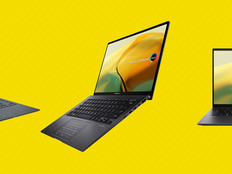Review: Brother's ImageCenter ADS-2500W Scanner Is a Pal for the Paperless
Even in this age of “digital everything,” many offices still manage a lot of paper. The demand for converting information to a digital format can seem overwhelming. Enter the Brother ImageCenter ADS-2500W scanner, a good choice for meeting volume desktop imaging needs.
End-User Advantages
A scan can be initiated either from the 3.7-inch, full-color touch screen on the scanner or from the Brother Control Center 4 application installed on a local desktop or notebook computer.
One of the most outstanding features is the multitude of avenues for delivering scanned information: A scan can be sent to a File Transfer Protocol location, to a file share on the network, to a computer (connected via USB), to a USB drive, to an email address or to a web server.
During testing — using the default configuration of 300x300 dot-per-inch resolution with 24-bit color and converting to a PDF — the ADS-2500W achieved a consistent rate of 19.75 pages per minute for 30 pages loaded to the automated document feeder. That’s a bit off the 24-page-per-minute rate noted in the Brother documentation, but enough speed compared with similar scanners.
The Control Center 4 interface allows more control over input options than the touch screen. The app lets the user adjust settings such as dot-per-inch resolution (from 100x100 up to 1200x1200) and simplex/duplex scan modes.
Why It Works for IT
Brother realizes that employees work in a world of shrinking desktop space, so the ADS-2500W doesn’t take up much. At 7.9 pounds, it’s a little bulkier than some of its competition, but the touch-screen interface makes up for the additional heft.
Maintenance is fairly easy to perform. A small gray latch located just above the feeder provides access to the sheet-feeding mechanism to clear jams. The five rollers also can be cleaned easily with the cover open.
The scanner works well in a shared environment. It can send to 300 stored email addresses and simultaneously support up to 10 network profiles, such as file servers or FTP locations. Security parameters can be set up using Active Directory information, enabling files to be sent to a protected file server on the network.
Disadvantages
The scanner’s ability to support wireless networking is a great feature, but it requires some IT know-how to set the IP address on the touch screen and then navigate to the address via a web browser. That is also true when setting up Active Directory settings for secure scanning.
Scanning time appears highly dependent on the desktop or notebook system used to access Control Center 4. The actual rate at which documents moved through the feeder is fairly consistent (about 20 pages per minute). But depending on the settings, the total scanning time can vary widely. For instance, converting a searchable PDF brought the rate down to 8 pages per minute. Wireless connectivity also seems to slow it down a bit.
The ability to scan through a wireless connection comes in quite handy, however, as does the ability to send to a variety of locations. All in all, the ADS-2500W is a pal to those trying to go paperless.







